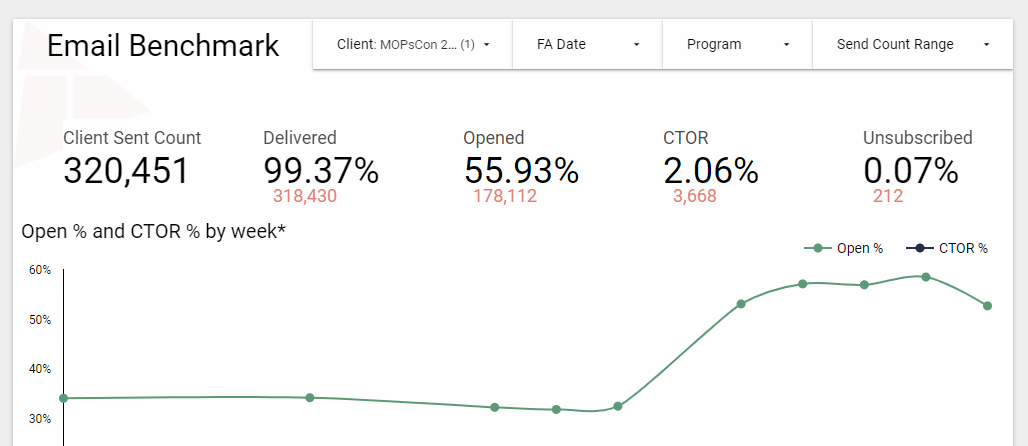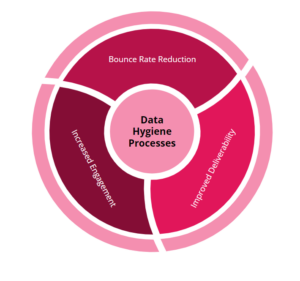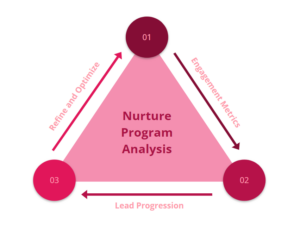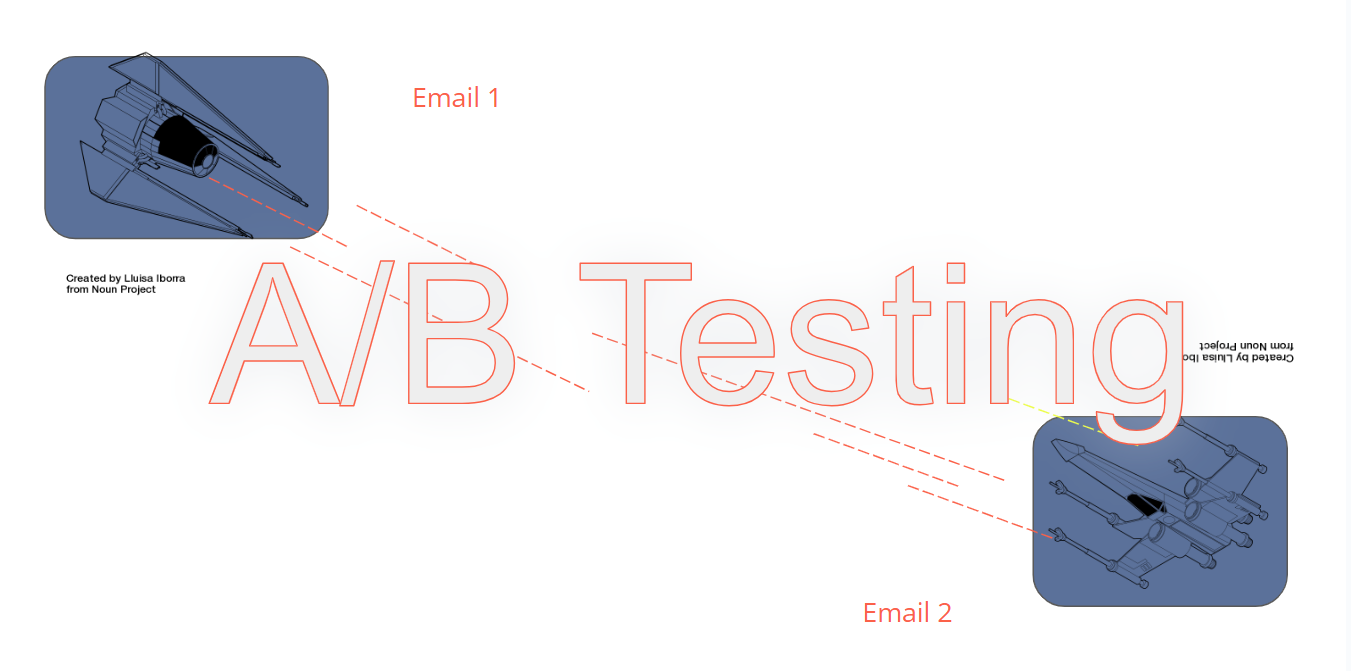Overview
 In today’s dynamic marketing landscape, where personalized engagement and timely interactions are paramount, harnessing the power of marketing automation has become an indispensable strategy. However, the true value of marketing automation lies not just in its execution, but in its data-driven insights. So let’s delve into the world of marketing automation analytics.
In today’s dynamic marketing landscape, where personalized engagement and timely interactions are paramount, harnessing the power of marketing automation has become an indispensable strategy. However, the true value of marketing automation lies not just in its execution, but in its data-driven insights. So let’s delve into the world of marketing automation analytics.
Delving into the realm of email campaign management, this blog explores the significance of Email Campaign Performance Reports, drawing a parallel to the mastery of lightsabers by Jedi Knights. It emphasizes the necessity of accurate data collection, akin to embracing the ways of the Jedi, as the foundation for effectively measuring the triumphs of email campaigns. This blog underscores the requirements for generating these reports and highlights how they serve as a guiding force for marketers, enabling them to navigate the complexities of both the marketing galaxy and the challenges posed by their marketing automation platforms. In essence, it unveils the power of analytics in dissecting and understanding the intricacies of email campaign duels, shedding light on the benefits that stem from monitoring the impact of marketing automation processes through comprehensive performance reports.

Chapter 1: ‘Your path you must decide’ – Yoda
 In a galaxy not so far away, email marketers face the ultimate challenge – mastering the power of email marketing with the help of star metrics!
In a galaxy not so far away, email marketers face the ultimate challenge – mastering the power of email marketing with the help of star metrics!
“What is an email performance report, you ask? Well, it’s like our trusty lightsaber, a powerful tool for email marketers. It’s a summary of how our email campaigns are performing.”
Email performance refers to the measurement and evaluation of the effectiveness of an email marketing campaign or individual email message. It involves assessing various key metrics to determine how well an email campaign or message has achieved its intended goals, such as reaching the target audience, generating engagement, and driving desired actions (e.g., clicks, conversions, or revenue).
But why is it useful, you wonder? A good email performance report is like our starship’s navigation system. It guides us through the email marketing galaxy. It helps us understand what’s working and what’s not, allowing us to course-correct.
- List Growth Rate: It’s important to track how quickly your email list is growing. A healthy email marketing strategy should see continual list expansion.
- A/B Testing Results: Analyze the performance of different email versions if you conducted A/B tests. Compare open rates, CTRs, and conversion rates to determine which elements of your emails are most effective.
- Email Engagement over Time: Observe how email performance changes over time. Look for trends in metrics like open rate, CTR, and conversion rate to identify patterns and adjust your strategy accordingly.
- Device and platform analytics: Check which devices and email clients your recipients use to open emails. This information can help you optimize email design and content for different platforms.
- Geographic Analysis: Determine if values within a segment perform differently. For example: geographic location: where your recipients are located. Tailor content, timing, and language to better suit your audience’s geographical preferences.
Remember though – you cannot effectively evaluate the above without having a benchmark email report set up to evaluate the data collected from these additional analysis themes.
Furthermore, it’s important to set clear objectives for each email campaign and continuously refine your strategies based on the insights gained from performance reports. Regularly monitoring these metrics will help you make data-driven decisions to improve your email marketing efforts.
Chapter 2: Strength lies within
To create a strong email performance report, we need the right data. Here are the essential metrics we must include and why each one is crucial.
 |
Open Rate: This metric indicates the percentage of recipients who opened your email. It’s a crucial indicator of your email’s subject line and sender’s reputation. A high open rate generally suggests that your email was compelling and relevant. |
 |
Click-Through Rate (CTR): CTR measures the percentage of email recipients who clicked on one or more links contained within your email. It helps you assess the email’s content and call-to-action effectiveness. It’s like the roar of Chewbacca – loud and attention-grabbing |
 |
Conversion Rate: This metric indicates the percentage of recipients who completed a desired action after clicking through your email, such as making a purchase, signing up for a newsletter, or filling out a contact form. It directly reflects the email’s success in driving conversions. |
 |
Bounce Rate: Bounces are like the Death Star blocking our messages. Bounces occur when an email cannot be delivered to a recipient’s inbox. There are two types: hard bounces (permanent delivery failures, often due to invalid addresses) and soft bounces (temporary issues like a full mailbox). High bounce rates can harm your sender’s reputation. |
 |
Unsubscribe Rate: This measures the percentage of recipients who opted out of receiving future emails from your sender. A high unsubscribe rate might indicate dissatisfaction with your content or email frequency. |
 |
Email Deliverability: This metric assesses how many emails successfully reach the recipients’ inboxes. Factors like spam complaints, sender reputation, and email content quality affect deliverability. |
Chapter 3: ‘Patience you must have my young Padawan’ – Yoda
You may be thinking, how can an email performance report be used for reporting on the success or effectiveness of Marketing Automation processes?
Let’s dive in, young padawan!
Data Hygiene Processes: ‘You will find only what you bring in’ – Yoda
Bad data in means bad data out … even Yoda knew the importance of Data hygiene programs. But …. How do you track that it’s effectively set up and being implemented with an email performance report? Seems crazy, right? Nope!
 Bounce Rate Reduction: Email performance reports can reveal the impact of data clean-up efforts on bounce rates. A decrease in bounce rates over time indicates that data hygiene processes are effective in removing invalid email addresses from your lists.
Bounce Rate Reduction: Email performance reports can reveal the impact of data clean-up efforts on bounce rates. A decrease in bounce rates over time indicates that data hygiene processes are effective in removing invalid email addresses from your lists.- Improved Deliverability: Monitoring email deliverability metrics can show if data clean-up efforts are positively affecting your sender reputation, leading to better email delivery rates.
- Increased engagement: when you remove the folks who are unqualified and/or not quality data persons then you will see your other metrics go up as well.
Let’s take an example: you have your benchmark email performance report in place and are tracking monthly trends for each metric (opens, clicks, deliverability, etc.).
The month of October shows an email deliverability rate of 91%, you implement a bounce rate automation program that looks at the soft and hard bounces and appropriately removes the marketability tag from persons when they hit certain bounce rate messages. November email pull comes around and your email deliverability rate is now at 95% (which according to many is a positive email deliverability rate) showing a 4% increase! If this % deliverability stays Month over Month you can show the direct impact that your data quality programs had on email performance.
Nurture Programs
Your team has decided that ad hoc emails can be timely to develop and build and want to invest in a nurture program to consistently guide a prospect through your suite of products. How do you know if a nurture program is more effective than your ad hoc emails?
Email performance benchmark comparison comes into play!
 Engagement Metrics: Track email open rates, CTRs, and conversion rates for nurture emails. These metrics can help assess whether your nurturing content is resonating with your audience and guiding them through the buyer’s journey effectively and if the time spent developing the nurture paid off. For example, by automating the process you can spend additional time analyzing the data within the nurture performance reports vs. developing Ad Hoc emails and refine the content/emails vs. developing net-new emails constantly. Your email performance reports will help guide you in the appropriate direction
Engagement Metrics: Track email open rates, CTRs, and conversion rates for nurture emails. These metrics can help assess whether your nurturing content is resonating with your audience and guiding them through the buyer’s journey effectively and if the time spent developing the nurture paid off. For example, by automating the process you can spend additional time analyzing the data within the nurture performance reports vs. developing Ad Hoc emails and refine the content/emails vs. developing net-new emails constantly. Your email performance reports will help guide you in the appropriate direction- Lead Progression: Analyze how leads progress through the nurture program by tracking their interactions with emails and the time it takes for them to convert. This can help you refine your nurture program to accelerate lead progression. Since you have the benchmark report you can understand if you see a fall-off with different metrics throughout the process.
Refine & start over
A/B Testing
A/B testing is our force experiment. We learn which message has more power by enacting it.
However, without benchmark email reports, it’s harder to understand if one message is truly outperforming another.
 A solid A/B test requires that marketers have a clear, focused, and easily testable hypothesis. One can not simply generate a hypothesis without clean and clear data to develop the hypothesis. This is where an email performance report helps. Understanding historical data and how your emails normally perform in a market can develop a logical and data-oriented hypothesis that addresses the problem being answered.
A solid A/B test requires that marketers have a clear, focused, and easily testable hypothesis. One can not simply generate a hypothesis without clean and clear data to develop the hypothesis. This is where an email performance report helps. Understanding historical data and how your emails normally perform in a market can develop a logical and data-oriented hypothesis that addresses the problem being answered.
In order to develop the hypothesis, marketers should:
- Understand the question or problem being solved. (i.e. improve open rate)
- Review existing data:
- What is your normal open rate from your benchmark report?
- What is a good open rate for your industry?
- Identify the variable:
- Subject line
- Formulate the testing question: I want to understand if Star Wars references in the subject line improve the open rate.
- Generate the testing hypothesis:
- If [independent variable] is [change], then [dependent variable] will [change or respond in a certain way].
- If the email with the subject line includes a Star Wars reference then the open rate will be higher than the email with a subject line without a Star Wars reference.
- Test
- Analyze
- Refine/Modify
- Analyze
This may seem like a lot for a simple subject line test, but remember documentation helps to inform future decisions and showcase the work being done by the team to continuously improve. By being systematic in the way changes are made, marketers can be confident that changes are in the best interest of their marketing campaign’s success and keep the team data-focused.
Furthermore, once you have a template in place it will be easier and faster to take action over time and repeatedly.
The battle for customer engagement is relentless, and the key to victory lies in the data-driven insights we’re about to explore.
Use email performance insights as a feedback loop for continuous improvement. If certain strategies are not yielding the desired results, the data from email performance reports can guide adjustments and refinements.







